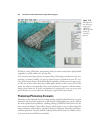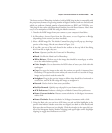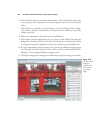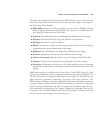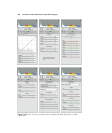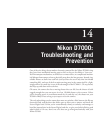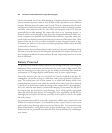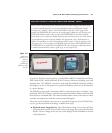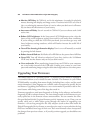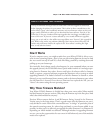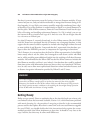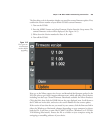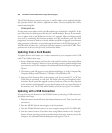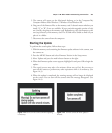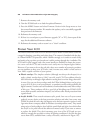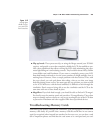
■ Monitor Off Delay. In CSM #c4, set for the minimum, 4 seconds, for playback,
menus, shooting info display, and image review. That three-inch LCD uses a lot of
juice, so reducing the amount of time it is active when you don’t turn it off manu-
ally can boost the effectiveness of your battery.
■ Auto meter off-delay. Set to 4 seconds in CSM #c2 if you can tolerate such a brief
active time.
■ Reduce LCD brightness. In the Setup menu’s LCD Brightness option, select the
lowest of the seven brightness settings that work for you under most conditions.
If you’re willing to shade the LCD with your hand, you can often get away with
lower brightness settings outdoors, which will further increase the useful life of
your battery.
■ Turn off the shooting information display. Turn it on or off manually as needed
by pressing the Info button.
■ Reduce internal flash use. No flash at all or fill flash use less power than a full blast.
■ Cancel VR. Turn off vibration reduction if your lens (such as the 18-200mm
VR II lens) has that feature and you feel you don’t need it.
■ Use a card reader. When transferring pictures from your D7000 to your computer,
use a card reader instead of the USB cable. Linking your camera to your com-
puter and transferring images using the cable takes longer and uses a lot more power.
Upgrading Your Firmware
The camera relies on its “operating system,” or firmware, which should be updated in
a reasonable fashion as new releases become available. The firmware in your Nikon
D7000 handles everything from menu display (including fonts, colors, and the actual
entries themselves), what languages are available, and even support for specific devices
and features. Upgrading the firmware to a new version makes it possible to add or fine-
tune features while fixing some of the bugs that sneak in.
Firmware upgrades are used most frequently to fix bugs in the software, and much less
frequently to add or enhance features. The exact changes made to the firmware are gen-
erally spelled out in the firmware release announcement. You can examine the reme-
dies provided and decide if a given firmware patch is important to you. If not, you can
usually safely wait a while before going through the bother of upgrading your
firmware—at least long enough for the early adopters (such as those who haunt the
Digital Photography Review forums at www.dpreview.com) to report whether the bug
fixes have introduced new bugs of their own. Each new firmware release incorporates
the changes from previous releases, so if you skip a minor upgrade you should have no
problems.
David Busch’s Nikon D7000 Guide to Digital SLR Photography462



